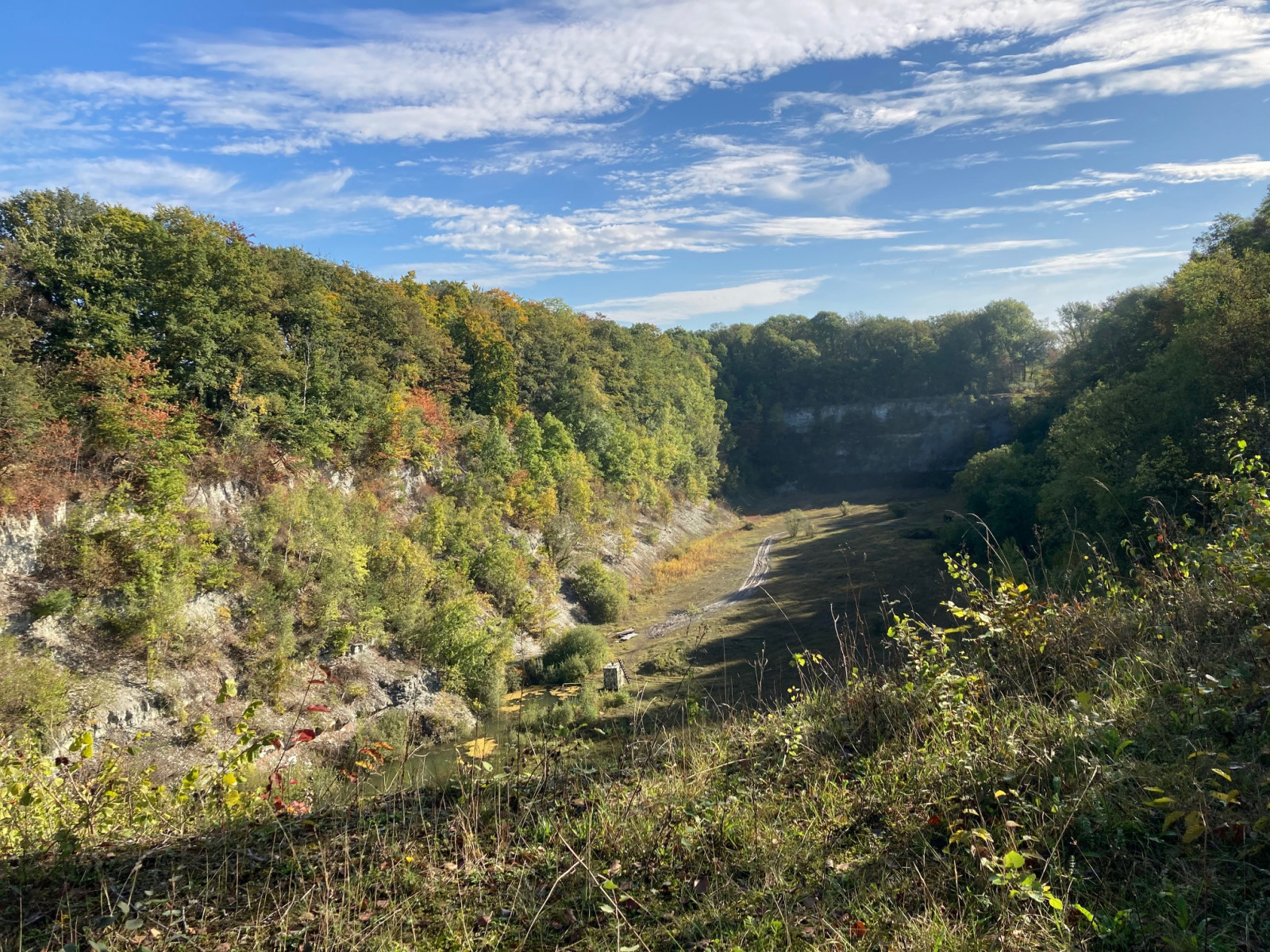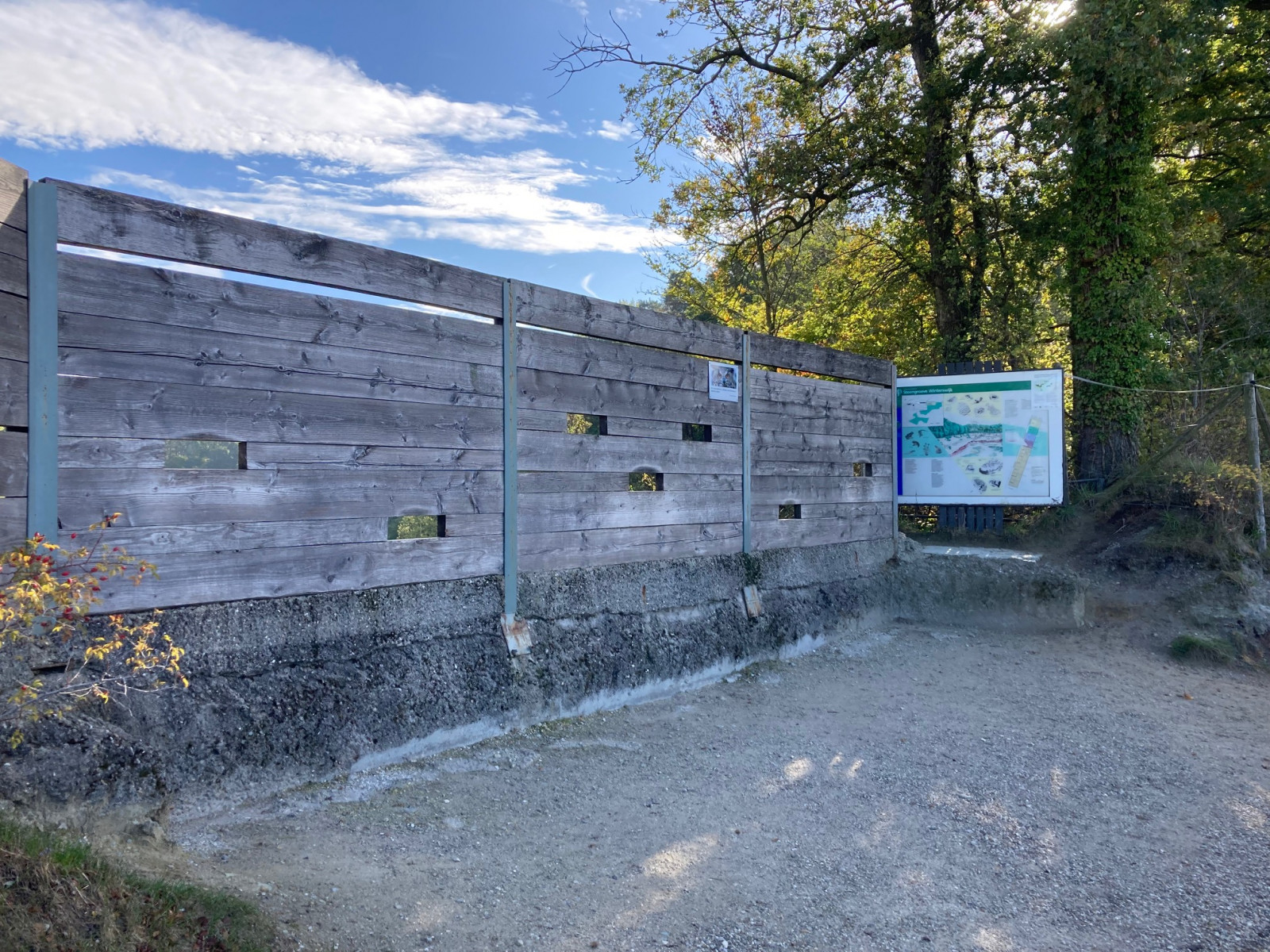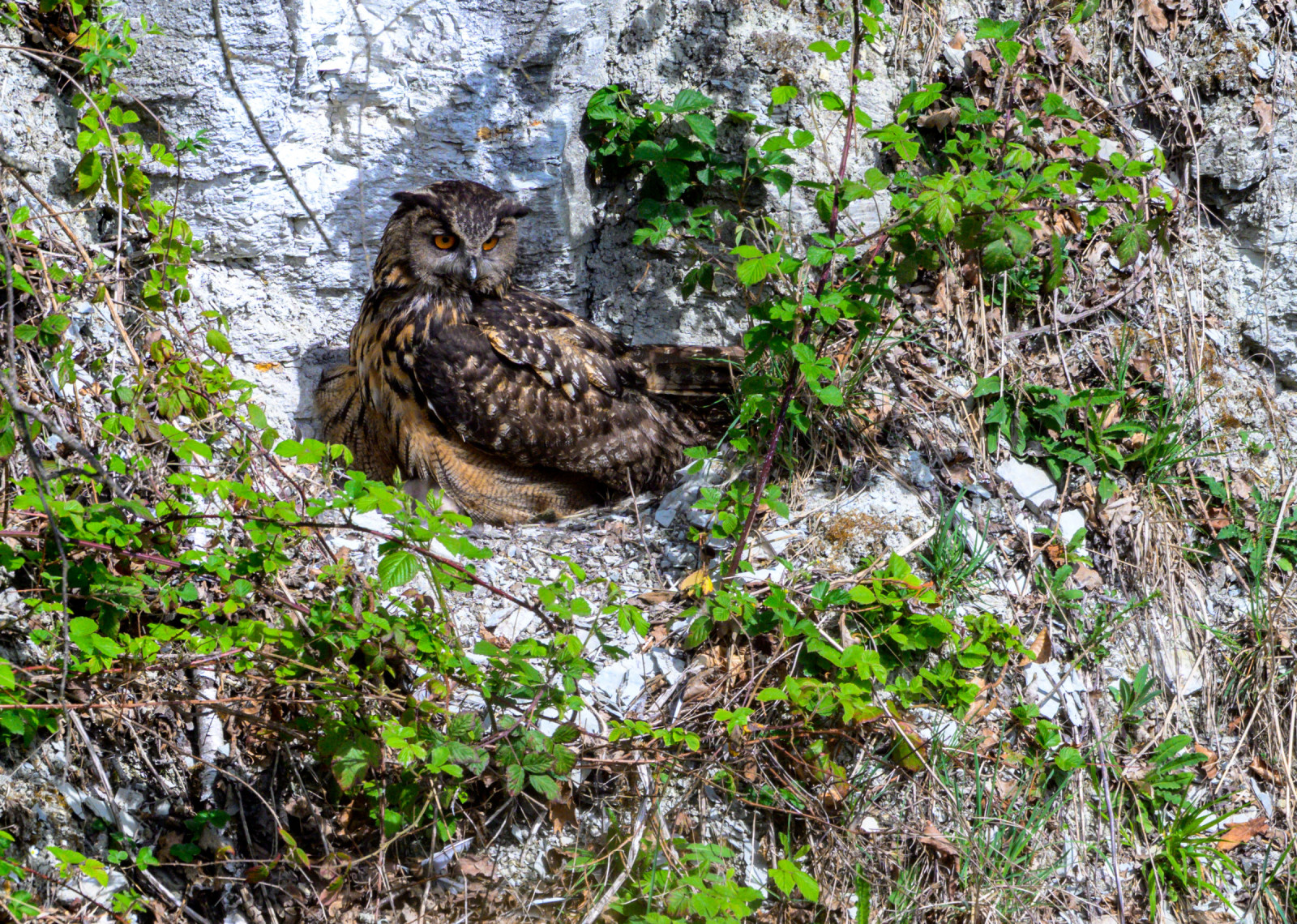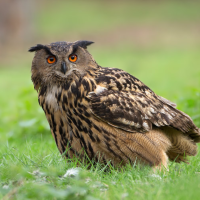Description
The Winterswijk Quarry is an active quarry located east of Winterswijk and is mined for (mainly) limestone. The area is famous for its fossil findings, like bones and fossilized tracks of multiple species of extinct reptiles, called Nothosaurs. The oldest part of the quarry has been given back to nature and is home to a breeding pair of Stor hornugle. An observation screen has been placed near the old quarry to observe the nesting Stor hornugle. They breed on a small ledge on the northwestern part of the quarry wall.
Surrounding the valley, extensive forests are located and provide ideal habitat for many species of breeding bird, like Grå Fluesnapper, Rødstjert and Broget fluesnapper. All five species of woodpecker can be found in the area, like Lille Flagspætte and Mellemflagspætte. The quarry itself is also home to Husrødstjert.
The active quarry, west of the Stor hornugle quarry, contains multiple ponds and provide a great habitat for Lille Præstekrave and Bjergvipstjert. The scattered bushes and trees near the edge of the quarry are great for Gulspurv, Tornsanger and Gærdesanger. In winter, Stor Tornskade can be found here too. The quarry provides a great open view of the sky and is therefore a great spot for observing raptors, like Hvepsevåge, Rød Glente and Duehøg.
_________________________
Nederlands: De Winterswijkse Steengroeve is ten oosten van Winterswijk is een van de beste plekken in Nederland om een oehoe in het wild te zien. De groeve staat ook bekend om zijn fossiele vondsten, zoals botten en gefossiliseerde sporen van meerdere soorten uitgestorven reptielen, de Nothosauriërs. Het oudste deel van de groeve is teruggegeven aan de natuur en herbergt een broedpaar Stor hornugle. Bij de oude steengroeve is een observatiescherm geplaatst om het nest van de Stor hornugle te observeren. Ze broeden op een kleine richel op het noordwestelijke deel van de steengroevemuur.
Rondom de groeve liggen uitgestrekte bossen die een ideaal leefgebied vormen voor vele soorten broedvogels, zoals Grå Fluesnapper, Rødstjert en Broget fluesnapper. Alle vijf soorten spechten komen in het gebied voor, zoals Lille Flagspætte en Mellemflagspætte. De groeve zelf is ook de thuisbasis van Husrødstjert.
De actieve groeve, ten westen van de Stor hornugle groeve, bevat meerdere vijvers en vormt een geweldig leefgebied voor Lille Præstekrave en Bjergvipstjert. De verspreide struiken en bomen aan de rand van de steengroeve zijn ideaal voor Gulspurv, Tornsanger en Gærdesanger. In de winter is Stor Tornskade hier ook te vinden. De groeve biedt een open zicht op de lucht en is daarom een uitstekende plek voor het observeren van roofvogels, zoals Hvepsevåge, Rød Glente en Duehøg.
Details
Access
The area is easy accessible due to the parking lot near the road and the unpaved pathway towards the observation screen.
_________________________
Nederlands: Het gebied is goed bereikbaar door de parkeerplaats bij de weg en het onverharde pad richting het observatiescherm.




